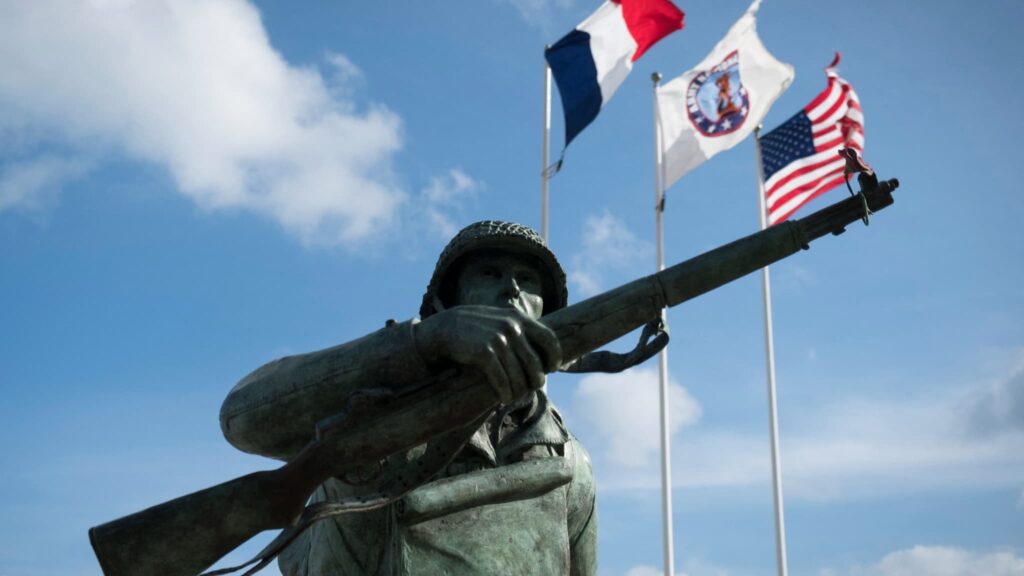The end of the Second World War took place 77 years ago now, the people who lived through this conflict are therefore very old today, and for many dead, which raises the question of the transmission of their history.
On May 8, to celebrate the end of the Second World War, we still find in processions all over France veterans, former resistance fighters or deportees, those who lived and participated in this war. But 77 years after the end of the conflict, the witnesses of this period are less and less likely to be alive.
« It’s a growing handicap », declares to BFMTV.com Jacques Varin, secretary general of Anacr (National Association of Veterans and Friends of the Resistance). « The youngest resisters at the time were 14 or 15 years old, they are now over 90 », and among those who are still alive, « some are no longer able to testify » because of their age advanced.
« A loss for the work of memory »
However, their stories have a unique place in our society. « The testimonies of the Shoah have a particular importance in the prevention of violence today », explains to BFMTV.com Hélène Camarade, professor of Germanic studies at the University of Bordeaux Montaigne, specialist in German resistance to the national- socialism. In this sense, when a witness dies, « it is a loss for the work of memory, civics, pedagogy » that his story allows.
Many of them recount their experiences in schools, during visits to certain memorials, or regularly to the media, so that this dark passage in history is not forgotten, so that everyone realizes what it happened then and may it not happen again. And if their stories can be transmitted by other mouths, “it is not the same, there is not the force that conveys a lived testimony”, declares Jacques Varin.
In order not to lose these stories, the director Steven Spielberg launched in the late 1990s the project Holocaust Visual History. He recorded hours of testimonials from people who lived through World War II so that their memories would be preserved even after their death. This organization now has more than 55,000 accounts, depending on the site, of the Second World War but also of other events such as the Armenian genocide or the genocide of the Tutsis in Rwanda.
« Our mission is to build empathy, understanding and respect through testimony, » reads the foundation’s website, which emphasizes that everyone is a « unique source of ideas and knowledge that offers stories power of history asking to be explored and shared ».
« Witnesses are a way to understand history »
However, historians point to the fragility that a testimony represents in reconstructing an entire period. Anne-Claire Faucquez, lecturer in American history, works on slave societies in the United States and has very little direct testimony from this period. She explains that there are records from the 1930s of people who lived before the abolition of slavery (1865).
“These are very valuable documents,” she argues, but “these are people who were children before the end of slavery, so their vision is potentially distorted” by what they understood at the time. era, but also by the hindsight of several decades on their memories. As useful as they are to his research, it is therefore necessary to cross-check them with other information.
« When a former member of the Resistance dies, we do indeed lose a voice, a way of telling, but we must not forget that this is a single subjective perspective, » says Hélène Camarade, who also underlines the invaluable nature of these testimonials. « Witnesses are a way to understand history, but historians use several subjects that they cross, not just one. »
With the disappearance of a man, « we lose a grip with reality, details, a point of view », abounds Anne-Claire Faucquez but the overall story of the event continues if it is relayed, « the memory will spread anyway » assures the historian.
“We are the witnesses of the witnesses”
« When the last hairy man, Lazar Ponticelli, died, voices worried about the transmission of the memory of 1914-1918. However, the memory of the First World War has not disappeared from our society », declared in 2018 to The cross Holocaust historian Tal Bruttmann.
Indeed, this period still lives through preserved stories, but also school education, museums, as well as a multitude of other cultural media such as comic strips, documentaries or novels that recall this war, even in a fictional way. Days such as May 8, devoted to commemoration, also serve to remember history, with places consecrated such as war memorials.
Plus « there are still hidden children [enfants juifs cachés pendant la guerre] who are alive and can testify », recalls Hélène Camarade « and there are also the children and grandchildren of the deportees, for example, who share what their parents have told them. There is still a link », even if it is different. « Another era, another phase begins, we are in transition. »
Anacr thus quickly opened up to the little brothers and sisters of the resistance fighters, or to their children, in order to continue to bring their stories to life by other means, « it prolongs direct memory », declares Jacques Varin. He was « born in 1944, so my memories of the landing are limited, » he jokes. However, « I am the bearer not of a personal experience, but of the testimonies that I have heard » and that it is possible to retransmit via the association, « we are the witnesses of the witnesses ».

